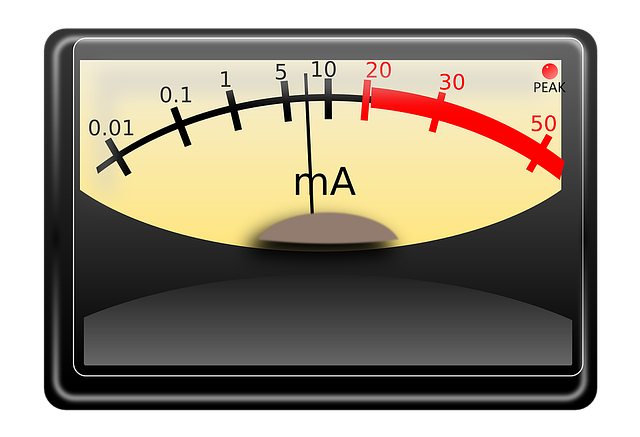Why Use Our Current Converter?
Converting current units can be confusing, especially when dealing with different scales like Amperes, Milliamperes, Microamperes, Nanoamperes, Picoamperes, Kiloamperes, and Megaamperes. Our current converter simplifies this process by providing accurate and instant conversions between these units. Whether you’re a student, professional, or just someone who needs to make quick calculations, our tool is designed to meet your needs.
Key Features of Our Current Converter
- Wide Range of Units: Convert between Amperes, Milliamperes, Microamperes, Nanoamperes, Picoamperes, Kiloamperes, and Megaamperes. Our comprehensive list of units ensures you have everything you need for any conversion task.
- Instant Results: Get immediate conversion results as you type, making it easy to work with precise measurements. No more waiting for calculations; our tool provides real-time feedback.
- User-Friendly Interface: Our intuitive design ensures that anyone can use the converter effortlessly. Simple controls and clear labels make navigation a breeze.
Understanding the Units
Here is a brief explanation of each unit available in our current converter:
Ampere (A)
The Ampere is the SI base unit of electric current, defined as the constant current that, if maintained in two straight parallel conductors of infinite length, of negligible circular cross-section, and placed 1 meter apart in vacuum, would produce between these conductors a force equal to \(2 \times 10^{-7}\) newton per meter of length.
Milliampere (mA)
The Milliampere is a multiple of the Ampere, equal to \(0.001\) Amperes. It is commonly used in electronic circuits.
Microampere (µA)
The Microampere is a multiple of the Ampere, equal to \(0.000001\) Amperes. It is commonly used in sensitive electronic devices.
Nanoampere (nA)
The Nanoampere is a multiple of the Ampere, equal to \(0.000000001\) Amperes. It is used in very sensitive electronic measurements.
Picoampere (pA)
The Picoampere is a multiple of the Ampere, equal to \(0.000000000001\) Amperes. It is used in extremely sensitive electronic measurements.
Kiloampere (kA)
The Kiloampere is a multiple of the Ampere, equal to \(1,000\) Amperes. It is used in high-power electrical systems.
Megaampere (MA)
The Megaampere is a multiple of the Ampere, equal to \(1,000,000\) Amperes. It is used in very high-power industrial applications.
Complex Explanation and Examples
Current conversion involves understanding the relationship between different units and applying the appropriate conversion factors. The conversion factor between two units is the ratio of their sizes. For example, to convert from Amperes to Milliamperes, we use the conversion factor \(1 \, \text{A} = 1000 \, \text{mA}\).
Let’s consider a few examples:
Example 1: Convert 5 Amperes to Milliamperes
The conversion factor is \(1 \, \text{A} = 1000 \, \text{mA}\). Therefore, to convert 5 Amperes to Milliamperes, we multiply by 1000:
\[ 5 \, \text{A} \times 1000 \, \frac{\text{mA}}{\text{A}} = 5000 \, \text{mA} \]Example 2: Convert 2.5 Milliamperes to Amperes
The conversion factor is \(1 \, \text{mA} = 0.001 \, \text{A}\). Therefore, to convert 2.5 Milliamperes to Amperes, we multiply by 0.001:
\[ 2.5 \, \text{mA} \times 0.001 \, \frac{\text{A}}{\text{mA}} = 0.0025 \, \text{A} \]Example 3: Convert 3 Nanoamperes to Microamperes
The conversion factor is \(1 \, \text{nA} = 0.001 \, \text{µA}\). Therefore, to convert 3 Nanoamperes to Microamperes, we multiply by 0.001:
\[ 3 \, \text{nA} \times 0.001 \, \frac{\text{µA}}{\text{nA}} = 0.003 \, \text{µA} \]How to Use the Current Converter
Using our current converter is simple. Just follow these steps:
- Enter the value you wish to convert in the “From” field.
- Select the unit of the value you entered from the dropdown menu next to the “From” field.
- Choose the unit you want to convert to from the dropdown menu next to the “To” field.
- The converted value will appear automatically in the “To” field.
Additional Tips
If you need to switch the units, simply click the “Switch” button. This will swap the “From” and “To” units, allowing you to perform the conversion in reverse.
To start over, click the “Clear” button. This will reset all fields, making it easy to begin a new conversion.
The Importance of Accurate Current Conversions

Accurate current conversions are crucial in many fields, including engineering, science, electronics, and physics. Using the wrong unit or making a calculation error can lead to significant mistakes and costly consequences. In electrical engineering projects, for example, a small error in current measurement can result in inaccurate circuit designs. In electronics, incorrect current measurements can lead to faulty device performance.
Our current converter helps ensure precision by providing reliable and up-to-date conversion formulas. Whether you’re working on a small project or a large-scale endeavor, our tool can help you achieve accuracy. Trust our converter to handle all your current conversion needs with ease.
Benefits of Using Our Current Converter
There are numerous benefits to using our current converter:
- Time-Saving: Save valuable time by avoiding manual calculations and potential errors.
- Accuracy: Ensure precision with reliable conversion formulas.
- Accessibility: Use the converter from anywhere with an internet connection.
- Versatility: Handle a wide range of units, making it suitable for various applications.
Real-World Applications
Our current converter has practical applications in many real-world scenarios:
- Electrical Engineering: Precise current measurements are essential in designing and operating electrical systems and circuits.
- Electronics: Electronics engineers rely on accurate current measurements for designing and testing electronic devices.
- Physics: Understanding current in different units can be helpful in physics problems and calculations.
- Manufacturing: Accurate current measurements are crucial in manufacturing processes that involve electrical components.
Conclusion
Converting current units doesn’t have to be difficult. With our current converter, you can easily switch between Amperes, Milliamperes, Microamperes, Nanoamperes, Picoamperes, Kiloamperes, and Megaamperes and obtain accurate results every time. Try it out today and experience the convenience of precise measurements. Whether you’re a professional or just someone who needs to make quick calculations, our tool is here to help.
For more information, visit our Facebook page or contact us at office@calculator-convert.com.
